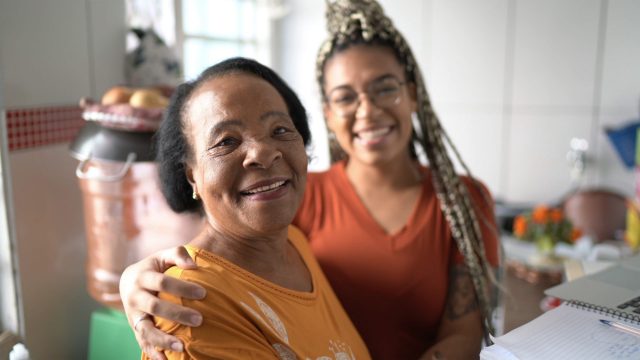Caregiving

Caregiving is assistance with the activities of daily living given either by a paid provider or, more frequently, by a family member. The provision of such assistance to older adults is often the factor that allows them to remain in their homes.
Family members and other informal caregivers are the largest sources of support for older adults in this country, but changes in family structure and social roles limit the ability of family members to provide that support. While in 2013, there were more than 14 adults of prime caregiving age (i.e., ages 45-64) for every person over the age of 85, by 2050, this ratio will drop to less than four to one. If these trends continue, older adults may have fewer sources of assistance, emotional support, and social interaction in the future. What’s more, caregiving responsibilities often impact the finances, mental and emotional health, relationship dynamics and work-life balance of those providing the care.
Publications & Resources
-
-
Policy Briefs
Public Health's Roles in Supporting Informal and Family Caregiving
As the population ages, the critical role of family and informal caregivers will continue to grow and needs support.
-
AFPHS Blog/Podcast
The Intersections Between Aging and Disability Policy
In this episode of Age-Friendly Public Health: The Podcast, host Dr. J. Nadine Gracia, President and CEO of Trust for America’s Health is joined by Alison Barkoff, Associate Professor of Health, Law, and Policy at the George Washington University Milken Institute School of Public Health, to discuss how disability and aging policy intersect and can support one another.
-
Policy Briefs
Valuing the Invaluable 2023 Update: Strengthening Supports for Family Caregivers
Family caregivers provide an estimated $600 billion in unpaid caregiving work. A new report from the AARP Public Policy Institute – Valuing the Invaluable – includes trends in family caregiving and discusses strategies for addressing the financial, social, and emotional challenges of caring for parents, spouses, and others
-
-